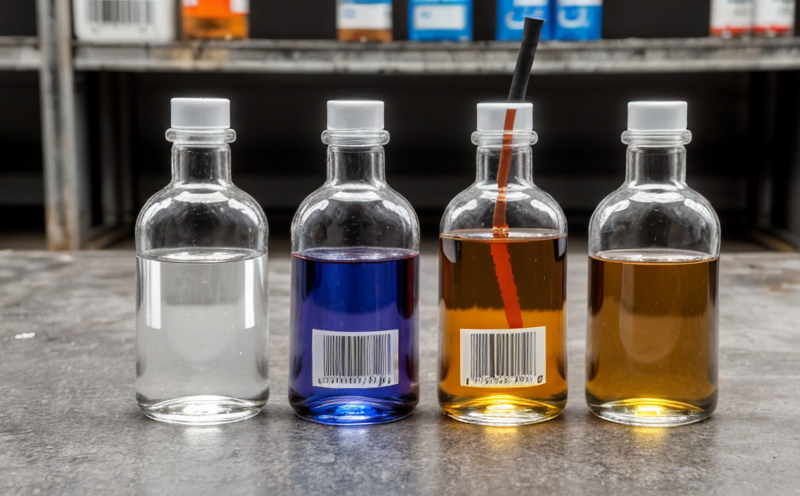JIS A1415 Building Material Fire Stability Testing
The JIS A1415 test protocol is a stringent standard used in Japan to evaluate the fire stability of building materials. This testing procedure ensures that construction materials meet the necessary criteria for fire resistance, which is critical for ensuring public safety and compliance with local regulations.
Building materials are often exposed to high temperatures during fires, and their performance under such conditions can significantly influence the extent of damage and potential hazards. JIS A1415 focuses on assessing how a material maintains its structural integrity and resistance over time when subjected to fire exposure. The test evaluates both thermal stability and mechanical properties.
The testing process involves exposing specimens to controlled conditions that simulate real-world fire scenarios. Typically, materials are placed in an oven where the temperature is gradually increased until it reaches 950°C for a specified duration (usually 30 minutes). During this period, the specimen's structural stability and resistance to deformation are monitored.
The results of JIS A1415 testing provide crucial data on how well materials perform under fire conditions. Compliance with these standards ensures that construction projects meet safety requirements set by regulatory bodies like the Japan Standards Association (JSA). By adhering to this test protocol, manufacturers can demonstrate their products' reliability and safety in various applications.
The importance of JIS A1415 testing cannot be overstated, especially given increasing global awareness about fire safety. As buildings become more complex and materials evolve, ensuring that all components meet stringent fire resistance standards is paramount to minimizing risks associated with structural failures during emergencies.
Understanding the nuances of this test helps stakeholders make informed decisions regarding material selection for new constructions or renovations. It also aids in complying with international norms while maintaining local requirements.
Scope and Methodology
The scope of JIS A1415 testing encompasses a wide range of building materials, including but not limited to wood-based products, composites, concrete elements, and other structural components. The primary objective is to assess the fire resistance properties of these materials by simulating real-world conditions through controlled laboratory tests.
In accordance with JIS A1415-2019, specimens are subjected to a series of tests designed to evaluate their thermal stability and mechanical integrity during prolonged exposure to high temperatures. Specifically, samples are placed in an oven where the temperature is gradually elevated to 950°C over a period of approximately one hour before being held at that temperature for another thirty minutes.
- Thermal Stability: This aspect evaluates how well a material retains its physical properties after prolonged exposure to heat. Key indicators include changes in size, shape, or coloration as well as the overall durability of the material.
- Mechanical Integrity: Another critical factor is the ability of the material to maintain structural strength despite extreme temperatures. Tests measure whether there has been any significant weakening due to thermal expansion or contraction.
Compliance with JIS A1415 standards provides assurance that building materials will perform reliably under fire conditions, thereby enhancing overall safety and reducing potential hazards. For manufacturers aiming to enter the Japanese market or comply with international standards, mastering this testing protocol is essential.
Benefits
Adhering to JIS A1415 fire stability testing offers numerous advantages for both manufacturers and end-users of building materials. One significant benefit lies in enhancing product quality and reliability, ensuring that materials meet stringent safety standards before being used in construction projects.
From a manufacturer's perspective, successful completion of these tests opens up opportunities for entering new markets, particularly within Japan but also internationally where similar standards are recognized. It demonstrates commitment to producing high-quality products capable of meeting global expectations regarding fire safety.
For end-users, compliance with JIS A1415 means peace of mind knowing that the materials being used have been rigorously tested and proven safe for use in challenging environments like fires. This contributes significantly towards improving overall building safety standards across various industries.
In addition to these direct benefits, there are also indirect advantages such as improved brand reputation and increased customer trust. Positive outcomes from JIS A1415 testing can lead to enhanced market competitiveness by setting a benchmark for excellence in fire-resistant materials.
International Acceptance and Recognition
- Eurocode Compliance: JIS A1415 standards are widely recognized across Europe, particularly in countries adopting Eurocodes. They provide consistent guidelines for assessing fire resistance properties of building materials.
- Australian Standards: While not directly referenced in JIS A1415 itself, many Australian codes reference similar methodologies for evaluating fire performance, ensuring compatibility with broader international practices.
- New Zealand Specifications: Similar to Australia, New Zealand follows international norms closely when it comes to specifying requirements for fire-resistant materials. Their standards often align well with those outlined in JIS A1415.
Given the increasing trend towards harmonization among different regions globally, compliance with JIS A1415 can serve as a stepping stone toward broader international acceptance and recognition of your products across diverse markets.





